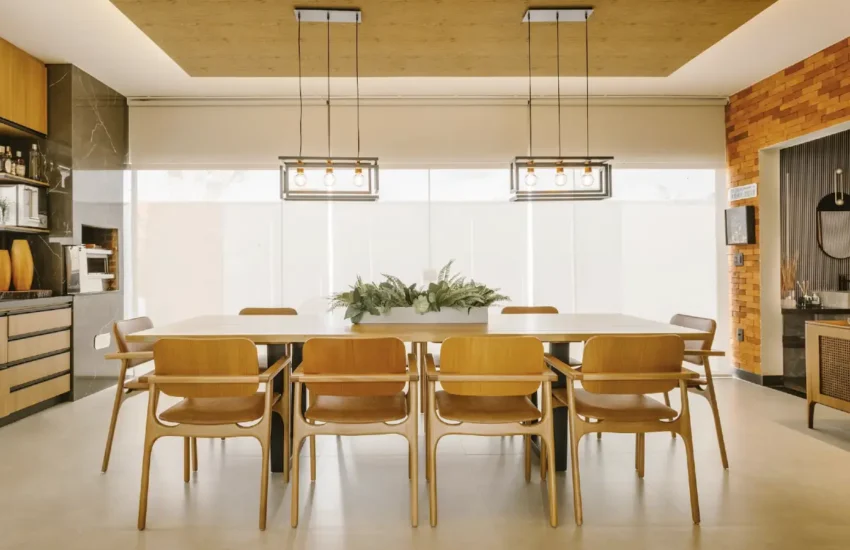7 Key Elements of a Beautiful Mediterranean Kitchen Design
Are you planning a kitchen renovation but struggling to decide what style you want?
Look no further than a Mediterranean kitchen design. Characterized by its natural elements, warm colors, and rustic textures, Mediterranean-inspired kitchens can turn every meal into a sun-soaked culinary experience.

Wanna learn more? Then read as we walk you through the seven key elements that capture the essence of a Mediterranean kitchen. Let’s dive in!
1. Natural Materials
One of the cornerstones of Mediterranean kitchen design is the use of natural elements. Transform your kitchen into a Mediterranean retreat by incorporating the following elements:
Stone
Think of stone countertops, a stone backsplash, or even stone flooring. Stone not only adds rustic charm to your kitchen, but it’s also incredibly durable. This is perfect for a bustling household kitchen.
Wood
Wooden elements such as cabinets, open shelving, and ceiling beams are another key feature. They add warmth and texture. Whether you choose a lighter or darker wood, it’s sure to complement the other natural materials in the room.
Clay
Don’t forget about clay. Clay pots, dishes, and tiles are common in Mediterranean kitchens. With their earthy tones and simple, rustic style, they help create a cozy, inviting atmosphere.
2. Warm Color Palette
A Mediterranean kitchen is like a warm, sunlit landscape translated into interior design. Color plays a pivotal role in achieving this effect. The color palette of a Mediterranean kitchen mainly leans towards warm, earthy hues and vibrant accents.
Earth Tones
Think of the golden hues of a Tuscan wheat field, the rich browns of freshly tilled earth, or the subtle grays of weathered stone. These colors lend a sense of warmth and natural beauty to the space.
For example, you could opt for terracotta or sandstone tiles for your floor or backsplash. You can also paint your walls in a soft, sun-washed yellow.
Vibrant Accents
Add pops of color with vibrant accents like blue, green, or even red. These colors represent the sea, sky, and blooms found in the Mediterranean region.
3. Rustic Touches
Rustic touches are one of the necessary Mediterranean kitchen elements. They add an old-world charm and timelessness to your space. Some rustic elements you can add include the following:
Handcrafted Items
Find items that look handmade, such as wrought iron hardware or a wooden table with visible grain and knots. These pieces reflect the craftsmanship that is a hallmark of Mediterranean culture.
Vintage Furniture
Consider incorporating vintage furniture items. Look for a well-loved farmhouse table or chairs with a distressed finish. These pieces carry a sense of history and can make your kitchen feel like it’s been there for generations.
Distressed Finishes
Using distressed finishes on cabinets and other surfaces can contribute to a rustic feel. This style mimics the wear and tear seen in old Mediterranean homes, adding character and depth to your kitchen. Whether it’s a weathered paint finish on cabinets or a patina on a copper sink, these details can make a big difference.
4. Natural Light
Natural light plays an integral role in a Mediterranean kitchen. It illuminates the room’s warm tones and natural materials. The abundance of light evokes the sunny Mediterranean climate. It brings a sense of warmth and openness to your kitchen.
To maximize natural light, aim for large windows, possibly even a skylight. If privacy is a concern, consider using light, airy curtains instead of heavy drapes.
Mirrored surfaces or shiny tiles can also help to reflect light around the room, enhancing the luminosity. As night falls, maintain the cozy ambiance with warm, soft lighting from pendant lights or wall sconces.
Remember, the goal is to emulate the inviting, sun-drenched charm of a Mediterranean villa. Light plays an essential role in achieving this. So when you’re working with a company like this home remodeling in Houston, for example, make sure to prioritize natural light.
5. Open Shelving
Open shelving is another Mediterranean kitchen element that combines both style and functionality. With open shelves, your beautiful crockery, glassware, and other kitchen items become part of the decor. It adds color, texture, and personal charm to the space. This design approach introduces an inviting atmosphere that is characteristic of Mediterranean homes.
On a practical level, open shelving provides easy access to everyday items, making cooking and serving more efficient. Whether you choose wood for a rustic touch or wrought iron for a more robust feel, open shelving embodies the effortless blend of style and functionality inherent in a Mediterranean kitchen.
6. Ornate Details
Ornate details are a quintessential part of Mediterranean kitchen design. They bring in the lavish and intricate aspects of Mediterranean culture, adding an element of luxury to the space.
Tiled Mosaics
Tiled mosaics, often in bright colors and complex patterns, can be used as backsplashes, on floors, or even as wall art. These mosaics can be abstract or depict scenes from nature. They imbue your kitchen with an artistic flair that is unique to the Mediterranean style.
Carved Wood
Hand-carved wood is another ornate detail that adds a touch of elegance. This could be in the form of intricately carved cabinet doors or a grand kitchen island with carved wood panels.
Wrought Iron Accents
You can also incorporate wrought iron accents into your home. This includes light fixtures, drawer pulls, or shelving brackets. They add a touch of sophistication and old-world charm. These pieces add visual interest and also reflect the influence of Mediterranean architecture.
7. Cozy Entertainment
The Mediterranean way of life is all about enjoyment and relaxation. It is about sharing good food and conversation and this is reflected in their kitchen design. Creating a cozy entertainment area within the kitchen is another important element of Mediterranean design.
Consider adding a comfortable seating area with plush cushions where family and guests can relax. This can be an area where they can socialize while meals are being prepared.
Alternatively, a large, communal dining table can serve as the heart of the space. It can encourage everyone to gather around and engage in lively conversation.
Mediterranean Kitchen Design: Bringing the Sun Into Your Home
As you can see, Mediterranean kitchen design is all about creating a warm, inviting space. It’s about mimicking the sunny climate and laid-back lifestyle of the Mediterranean region. By incorporating natural materials, warm colors, rustic touches, and ornate details, you can transform your kitchen into a cozy haven.
So, when you’re planning to freshen up your kitchen’s style, consider the Mediterranean design aesthetic. Happy designing!
Was this article helpful? If so, check out the rest of our site for more.


